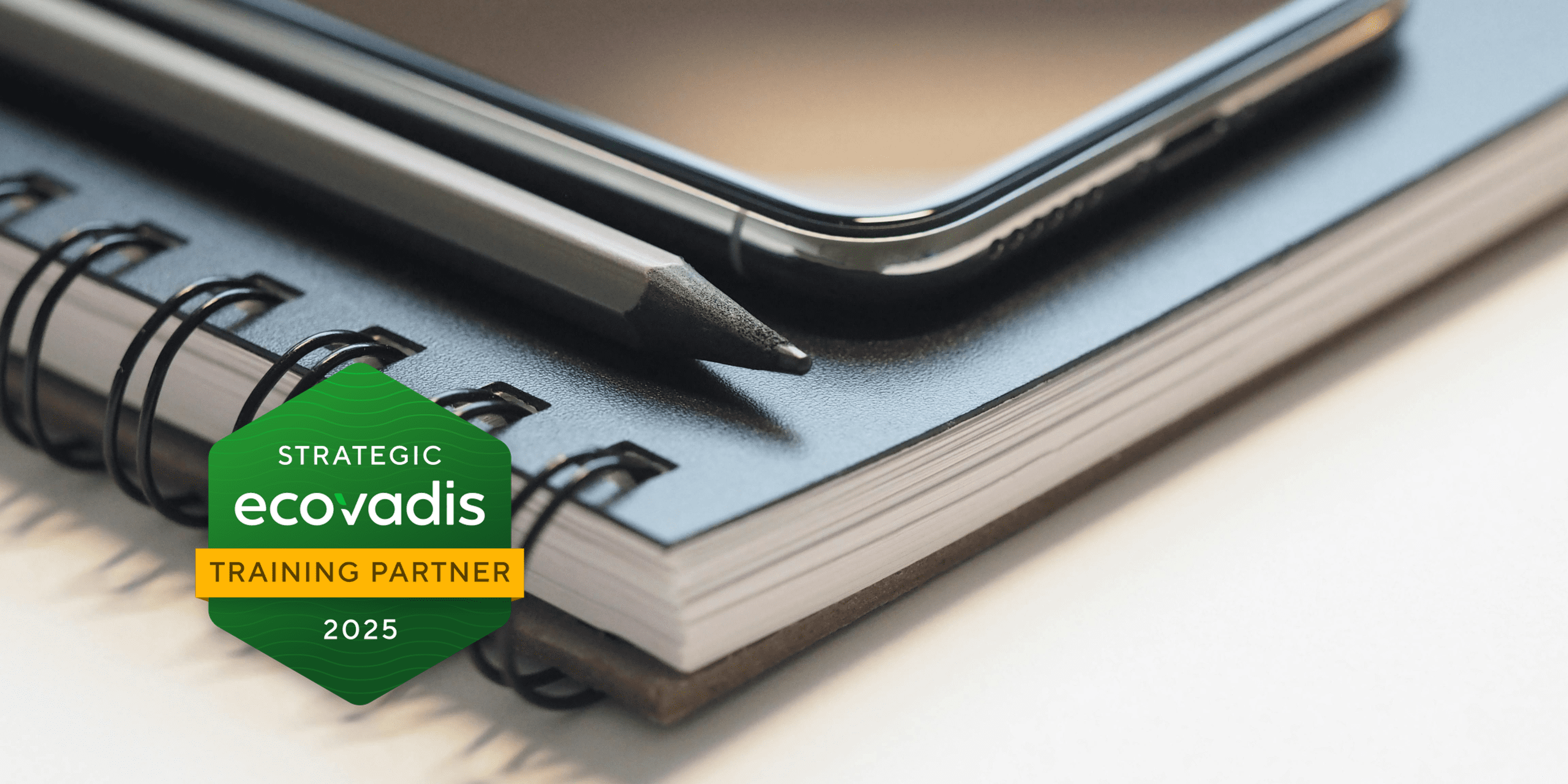 Navigating the new B Corp certification: What has changed and why it matters
Navigating the new B Corp certification: What has changed and why it matters
“Most emissions remain hidden below the surface of your operations, but tackling them is key to achieving net zero.”
Supply chains are the backbone of modern business. They connect resources, factories, logistics hubs, and end-customers in an intricate network of flows. But hidden beneath this global web lies a reality that few organisations see clearly: their supply chains are often responsible for the majority of their carbon emissions.
Some studies show that more than 90% of corporate greenhouse gas (GHG) emissions sit within scope 3 activities: the extraction of raw materials, supplier operations, logistics, product use, and eventual disposal (1). Yet these are the hardest emissions to measure and control.
In July 2025, a Nexio Projects webinar explored this theme in depth: Supply chain emissions: The hidden impact of your carbon footprint. The session addressed the scale of the challenge, the reporting complexities, and effective decarbonisation strategies to help businesses move from compliance towards purpose-driven sustainability.
This article draws together the most crucial insights shared during the session.
Current landscape
Today’s supply chain system is vast, agile, and fragmented—at times thriving on innovation, yet at other times hindered by volatility and systemic disruption. Several defining forces shape the current state of global supply chains:
- Geopolitical instability and economic volatility: Ongoing wars, unpredictable tariffs, and trade restrictions increase uncertainty for sourcing and logistics.
- Persistent high emissions: Despite corporate pledges, global emissions remain high and reduction is mixed. Studies show we are on track for a 2.5–3°C global temperature rise by 2050 without stronger interventions (2).
- Technology adoption: The rise of generative AI is revolutionising logistics and monitoring, but with a climate cost, as energy demand and data centre emissions grow. By 2028, 25% of logistics KPIs will be powered by AI (3).
- Complex risk environment: Businesses face interconnected risks combining operational, political, environmental, and financial uncertainty.
On the climate side, achieving net-zero sustainability requires an unprecedented scale of action. Even if businesses decarbonise according to their existing pledges, 22 billion tonnes of CO2 from supply chains still need to be removed by 2050 (4).
This illustrates a sobering point: managing supply chain emissions is no longer just about compliance. It is becoming a matter of risk management, resilience, and future competitiveness.
Supply chain impacts
The iceberg effect
Most organisations view only a fraction of their actual climate footprint. What they can see—scope 1 emissions from company cars or boilers, and scope 2 from purchased electricity—sit above the waterline. But scope 3 sits hidden beneath.
This includes:
- Upstream suppliers and raw material extraction
- Service providers and professional services
- Manufacturing and assembly processes (not owned)
- Packaging and distribution
- Transportation and logistics
- End of life treatment and disposal
The “iceberg effect” means companies are often unaware of this much larger mass sitting just beneath operations. Without robust carbon footprint measurement, crucial decisions risk overlooking the true scale of impact.
Common barriers
Polls conducted during the session highlighted prevalent challenges faced by businesses:
- Lack of supplier data and unreliable reporting
- Limited resources to monitor and engage
- Difficulty engaging suppliers who may lack capacity or focus solely on regulation
- Complex multi-tier structures, making visibility low
- Greenwashing and misrepresentation of sustainability credentials
- A sense from suppliers that “our impact won’t make a difference”
Despite these barriers, the dynamic between buyers and suppliers presents an opportunity. Larger customers can exert meaningful influence on their supply base, while smaller organisations can collaborate, creating cascades that push emissions reductions further down the chain.
Supply chain reporting
GHG inventories and LCAs
Environmental reporting has traditionally focused on scope 1 and 2. Yet supply chain studies show an average multiplier effect: scope 3 emissions can be as much as 25 times greater than operational ones (1).
Life cycle assessment (LCA) studies reveal that up to 77% of a product’s full emissions occur outside of the company boundary. Around 45% comes from upstream supply chains, and 32% from downstream impacts (1). These figures underline why carbon accounting cannot stop at the factory gate.
Find out more about LCAs through our article.
How to measure carbon emissions
Three methodologies are commonly applied:
- Spend-based – multiplying the economic value of purchases by a relevant emission factor. Fast, but not precise.
- Activity-based – using actual consumption figures such as tonnes of raw materials or litres of fuel. More accurate but data-intensive.
- Hybrid – can be a combination of spend and activity-based methods. Often relying on industry-specific databases (5).
Open-source databases (e.g. EXIOBASE) use broad industry averages, while commercial databases (e.g. Ecoinvent) give greater granularity. Businesses should adopt a progressive approach, improving accuracy each year as supplier engagement deepens.
Avoiding reporting pitfalls
Several pitfalls undermine carbon measurement:
- Suppliers inconsistently categorised across multiple services
- “Miscellaneous” categories accounting for up to 40% of spend
- Double-counting supplier services
- Data systems that do not talk to each other after acquisitions
- Missing link between procurement spend and actual products sold
The solution lies in continuous data management improvements, supported by collaboration between sustainability, procurement, operations, finance, and product teams.
Read more about supply chain data collection from our latest factsheet!

Supply chain strategy
Building effective strategies
Reporting is important but insufficient. To achieve carbon reduction and move towards net zero sustainability, companies need strategies that embed change across the business.
The recommended framework has five parts:
- Materiality and prioritisation: Focus on the suppliers and industries with the greatest emissions, risks, or strategic importance. “Top 20 suppliers” approaches often yield disproportionate impact.
- Identifying barriers and benefits: Consider regulatory pressures, market access, investor expectations, risk management, cost savings, and innovation opportunities. Map what prevents progress (lack of resources, unclear business cases) against potential benefits.
- Data management: Accept imperfect data in the early years. The goal is iteration and improvement, not immediate perfection.
- Collaborative engagement: Successful strategies are built on partnership, not imposition. Supplier training, upskilling, and access to shared tools increase commitment.
- Implementation planning: Establish governance structures, science based target initiative (SBTi) alignment, realistic timelines, and clear KPIs. Start with targeted carbon management objectives that can build momentum.
Why traditional approaches fail
Survey-based reporting or procurement clause requirements have proved slow and ineffective in driving real decarbonisation. Why? Because they often create a tick-box exercise disconnected from supplier decision-making.
Instead, systemic strategies have shown tangible improvements. For example, IKEA cut supply chain emissions by 22% since 2017, while BT reduced emissions by 20% across the same timeline (6). These companies adopted strategic, collaborative, and multi-year approaches, not just compliance reporting.
Q&A highlights
The session ended with a dynamic round of participant questions. Here are some of the expert’s key insights:
Q: Why should companies report supplier emissions if this risks double counting?
A: It’s about accountability. Scope 3 accounting means recognising that procurement decisions influence emissions elsewhere. Even if suppliers report their own scope 1 and 2, a buyer must include them as scope 3 to ensure decisions are informed, not blind to impact.
Q: How are carbon targets such as SBTi viewed by businesses?
A: Adopting targets aligned with the science based target initiative provides credibility, discipline, and signalling power. While some hesitate given achievability concerns, setting these targets demonstrates ambition and transparency—key elements in long-term value creation and carbon neutrality.
Q: How do you encourage a workplace culture that values emissions monitoring?
A: Start with education and awareness campaigns, backed by tangible processes such as carbon accounting projects. Engage cross-functional teams directly in GHG inventories so they understand not only the data required but also why it matters.
Q: What if customers expect carbon reductions but refuse to recognise costs?
A: This remains an industry-wide challenge. Often, genuine decarbonisation requires sector-level collaboration to share costs and ensure systemic change. Businesses should nevertheless track risk and highlight hidden cost exposures from inaction (e.g. reputational risks, regulatory fines).
Q: How should materiality be assessed in supply chain emissions?
A: Look beyond emissions volume alone. Consider supplier spend levels, market criticality, risk exposure, and supplier maturity in sustainability. Combining emissions data with strategic importance paints a more holistic picture of materiality.
Conclusion: A strong journey ahead
Tackling supply chain emissions is not a short-term compliance task—it is a strategic transformation journey. Success hinges on leadership commitment, accountability, proper resourcing, and integration of sustainability across teams.
Businesses that treat decarbonisation strategy merely as reporting obligations risk falling behind competitors. Those who embrace systemic approaches, integrating carbon accounting into risk management and supplier engagement, will not only drive emissions reduction but also enhance resilience and brand value.
In the words of the webinar: achieving net zero sustainability means moving “from compliance to purpose”. Supply chain decarbonisation isn’t just about ticking boxes—it’s about ensuring the long-term viability, responsibility, and innovation of your business.
How can Nexio Projects help you?
Named one of the top 10 boutique ESG and sustainability strategy consultancies worldwide by Verdantix, Nexio Projects supports organisations in building robust climate strategies and delivering on ambitious decarbonisation goals. As trusted net zero consultants and ESG experts, we guide businesses through corporate carbon footprint assessments, climate risk management, and the development of actionable decarbonisation roadmaps.
With a proven track record as a global sustainability consultancy, we combine technical expertise with strategic insight—helping clients navigate complex reporting requirements, avoid greenwashing, and unlock opportunities from the low-carbon transition.
Download our free Scope 3 guide to dive deeper into decarbonisation actions.

Ready to take control of your supply chain emissions and align with international best practices?
Book a consultation call with Nexio Projects to explore tailored decarbonisation strategies and carbon accounting solutions.
Subscribe to our newsletter for monthly ESG updates, trends on achieving net zero, and practical tips for carbon management.
References
- CDP (2025). Supply Chain Report. London: CDP Worldwide.
- World Economic Forum (2025). The Global Risks Report. Geneva: WEF.
- Gartner Inc. (2023). Future of Supply Chain KPIs Powered by AI. Stamford, CT: Gartner.
- Organisation for Economic Co-operation and Development (OECD) (2024). OECD Climate and Supply Chain Outlook. Paris: OECD Publishing.
- World Business Council for Sustainable Development (2024). Climate and Business Solutions Report. Geneva: WBCSD.
- Nexio Projects (2025). Supply Chain Emissions: The Hidden Impact of Your Carbon Footprint. Case references shared in July 2025 webinar, citing IKEA and BT outcomes.











